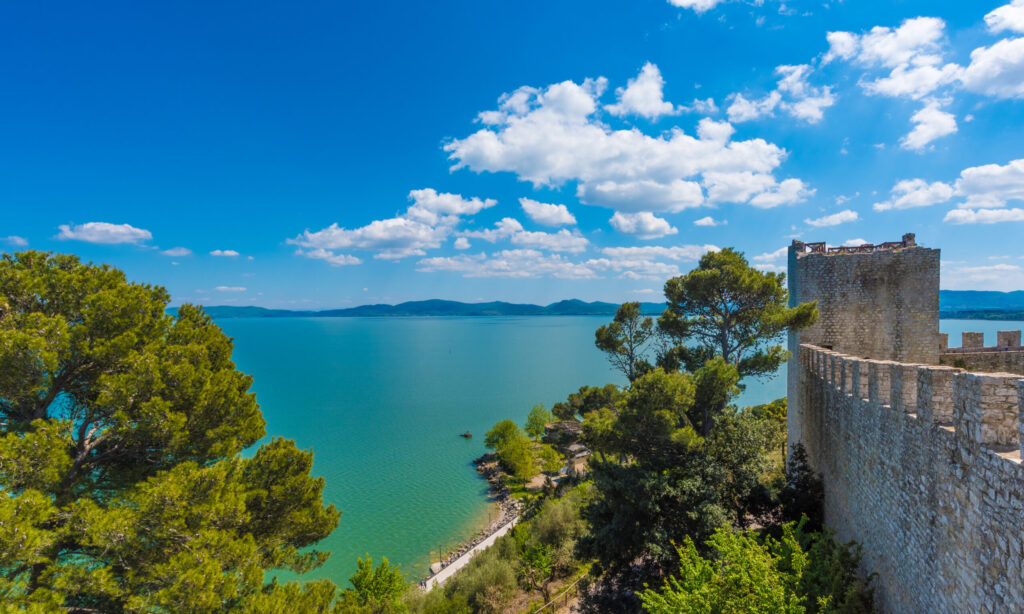The region of Umbria from west to east
The region is often called the "green heart of Italy," and it certainly lives up to its nickname! As the centre of the Italian boot, it is the only region that has no seacoast. Read more about the scenic highlights of the central Italian region!
Discovering the Breathtaking Landscapes of Umbria
Endless chains of hills and Lake Trasimeno
In the far north, the Tiber Valley forms the gateway to Umbria. The Tiber is the longest river in central Italy and the lifeline of this region. Behind it rise the wooded slopes of the Apennine Mountains. Monte Cucco, at 1,565 m, is the highest elevation in the north, followed by Monte Subasio. Here one sees dense beech forests, deep, rocky gorges and views of the surrounding hills and wide valleys. The mountain interior holds one of the most extensive caves in Europe.
The areas around the two peaks are nature parks and perfect places to go mountain biking and hiking. The hills and forests around Perugia are also popular hiking areas.
In the west of the region, rolling hills and cultivated land dominate the landscape. The beautiful Lago Trasimeno forms a blue dot in the bright green landscape.
With its proud 128 km² in size and a total of three islands, it is one of the most popular destinations in the region. Here there are many fish and many restaurants where they can be eaten. Heading south through fertile volcanic terrain past Orvieto to the tranquil Lago Bolsena.
The Valle Umbra and the Monti Sibillini in eastern Umbria
The fertile Valle Umbra stretches between the capital Perugia and Spoleto in south-eastern Umbria. It is not only the famous pilgrimage town of Assisi that makes the Valle Umbra a popular destination: the green and sacred forests of Monteluco offer tranquillity and great hiking trails. As they were already considered sacred in pre-Christian times, they cannot be cut for their wood or damaged.
Contact us to plan
your event or trip in Italy
Contact us now for a free consultation to plan an extraordinary experience for you and your guests!







